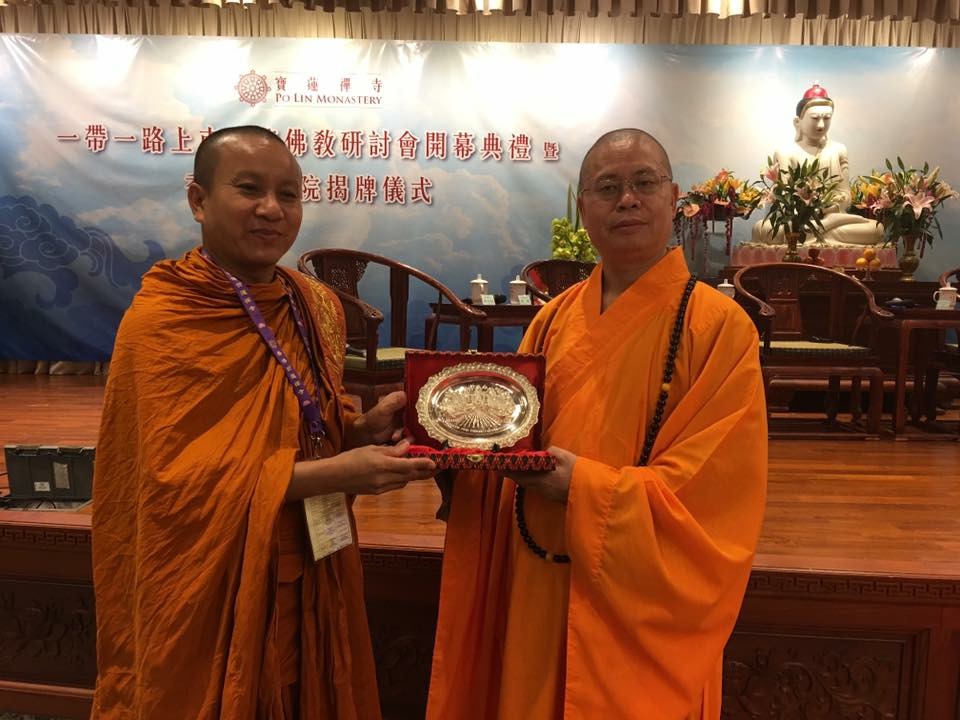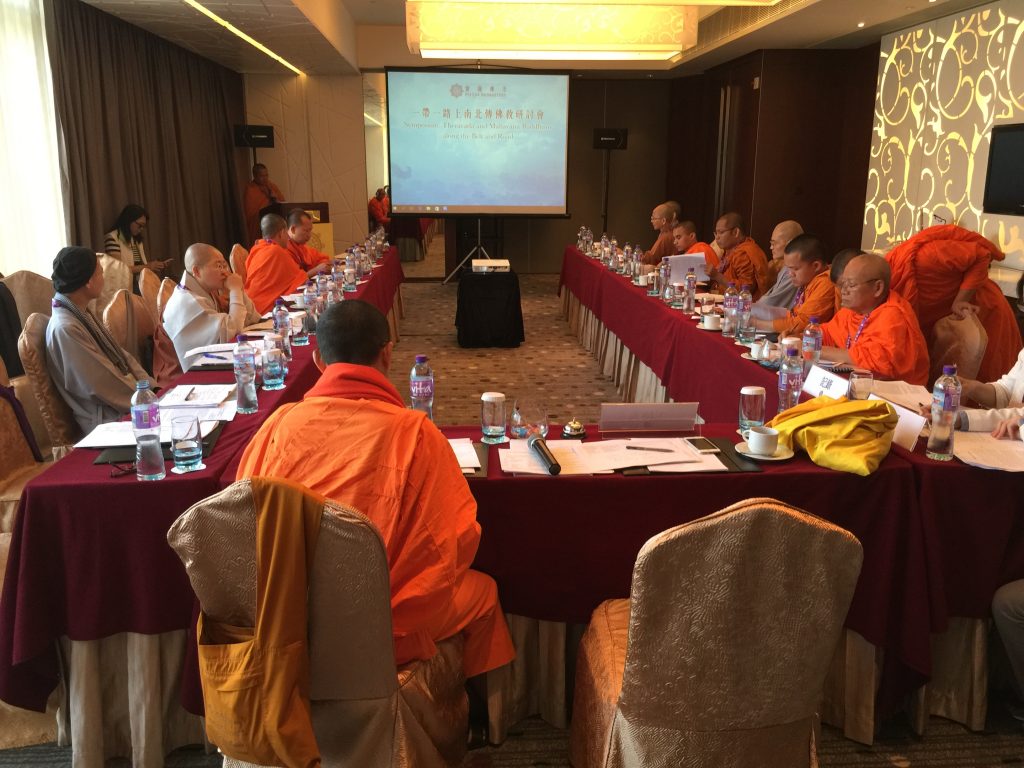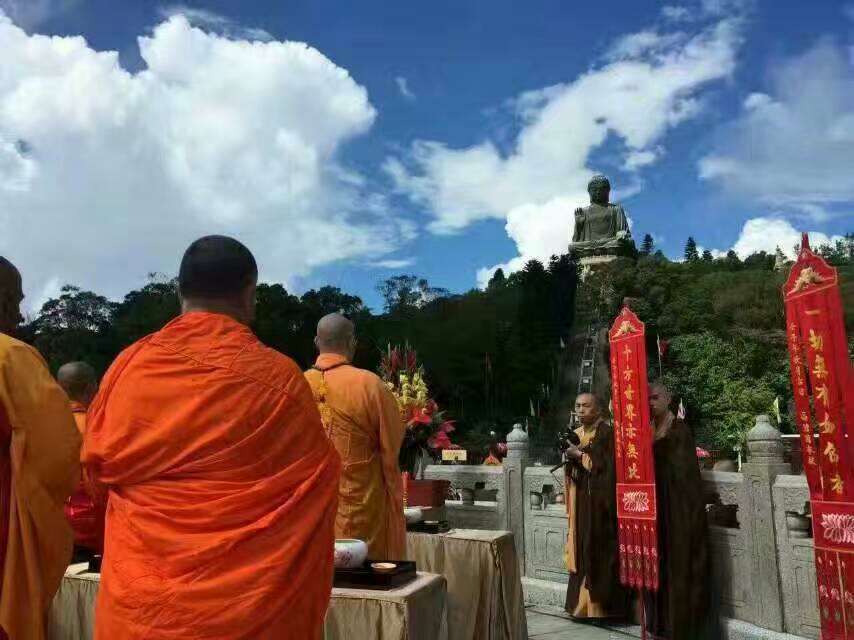29 June will be remembered as a key date in post-handover Hong Kong: aside from president Xi Jinping’s landmark visit to the fragrant harbor, Po Lin Monastery is celebrating the 20th anniversary of the handover as well as the 25th anniversary of its Big Buddha. It is also hosting a carefully timed, simultaneous symposium: Theravada and Mahayana Buddhism along the Belt and Road (29 – 30 June). This is a statement, at least from Po Lin Monastery and its friends: that the time is ripe for Buddhists, both of the southern and northern traditions, to integrate themselves into the new Silk Road that is China’s outreach to the world.
The conference is packed with guests and VIPs from Southeast Asia and South Asia. There are guests from Cambodia, Sri Lanka, and many others. There are many good, old friends here: Ven. Sovanratana, one of Cambodia’s most influential monastic professors. Karma Lekshe Tsomo of Sakyadhita, the world’s largest Buddhist women’s association. Ven. Fa Ren, one of Hong Kong’s most active Chinese Buddhist nuns.

The presence of Thailand’s Mahachulalongkornrajavidyalaya University (MCU) is particularly pronounced. Po Lin Monastery has been making generous overtures to Thailand’s most influential Buddhist university for the past half year. While the fruit of Po Lin Monastery and MCU’s collaboration is still in the works, what sources have told me is that MCU will play an important role in the education of monastic students, both Chinese and non-Chinese, at Po Lin. The monastery’s well-connected elders and administrators are astute readers of the winds and they seek to reflect the Belt and Road project’s spirit of outward looking cooperation by reaching out to influential Buddhist organizations in Asia.
The discussions and seminars at the symposium pertain to how Buddhism can take advantage of the transformation Eurasia (and the world) will undergo under the Belt and Road initiative: tourism at Buddhist sites, mutual exchange and learning between Mahayana and Theravada Buddhism, assessing the current situation of Belt and Road Buddhist countries, Hong Kong’s contributions to the Belt and Road, education, and the internet and social media are all hot topics that need hammering out. Buddhists from Mahayana and Theravada countries need to absorb good ideas from each other to unite the diverse cultures of Eurasia through shared values like compassion, societal harmony, and religious diversity and pluralism.

Chinese Buddhism has big plans for the Maritime Silk Road, within which Southeast Asia and South Asia are critical economic, political, and cultural regions. History has shown that during its unhappy periods of decline or division, China turns inwards, paralyzed when trying to deal with the world beyond its borders. In periods of confidence and ascendance, such as during the High Tang, the High Qing, or I daresay now in 2017, China is able to unite while radiating its influence across Eurasia as the civilization-state that history has shaped it to be.
Policymakers, monastics, and Buddhist and secular leaders alike are right to bring Buddhism on board in this great endeavor. Buddhist diplomacy in the Belt and Road Initiative is not merely symbolic or cosmetic. It matters and will help to shape the character of the project for as long as it is being implemented. Watch this space.

